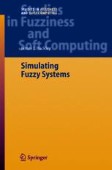Search
Search Results
-
Machine Shop II
This chapter continues the machine shop model discussed in the previous chapter. Management is considering a radical change in the machine shop...
-
Inventory Control I
This single item multi-period inventory model is shown in Fig. 16.1. This problem will be expanded and also studied in the next chapter. These...
-
Machine Servicing Problem
The machine servicing problem is shown in Fig. 14.1 and a basic description can be found in almost any operations research book ([1] p. 573(....
-
A Bus Stop
We have plenty of complaints about a certain bus stop. People can not get on the bus because when it stops it is already too crowded. We could add...
-
Bank Teller Problem
This is a classical problem in queuing theory: should there be multiple queues, one for each teller in a bank, or should we have one single queue for...
-
Life Insurance: New Account Model
This problem was derived from an example in [1]. The system is shown in Fig. 15.1. This figure shows how this insurance company handles an...
-
2. Analysis of Switched and Impulsive Systems
The analysis will focus on the case where the switchings are governed by a finite state machine. This is because the common Lyapunov function method...
-
Introduction to Fuzzy Sets and Fuzzy Logic
This chapter surveys preliminary notions and results that we use in subsequent chapters. We pay more attention to concepts which might not be well...
-
Information Technology for Deaf People
In our modern information and communication society, daily life would be unthinkable without technology. Information and Communications Technology...
-
3. Stability of Linear Switched and Impulsive Systems
In the previous chapter, we have set up the basic framework for the stability analysis of switched and impulsive systems. The framework provides the...
-
10. Future Research Directions and Potential Applications
Many interesting applications of switched and impulsive systems have been presented in the previous chapters. We shall conclude this book by...
-
Algebras with Fuzzy Equalities
The present chapter studies algebras with fuzzy equalities. Briely speaking, an algebra with fuzzy equality is a set equipped with a fuzzy equality...
-
Fuzzy Horn Logic
Implications between identities have been widely studied in universal algebra. There are numerous results on implicationally defined classes of...
-
Multimedia Communication System for the Blind
A Multimedia communication system for blind users is developed. The system is named MIMIZU and its terminal is composed of a refreshable tactile...
-
15 Experimental Analysis of the Proprioceptive and Exteroceptive Sensors of an Underactuated Prosthetic Hand
The development of a prosthetic hand able to replicate as much as possible the gras** and sensory features of the natural hand represents an...
-
3 Toward a Human-Friendly User Interface to Control an Assistive Robot in the Context of Smart Homes
The design of robot dedicated to person with disabilities necessitates users implication in all steps of product development: design solution,...
-
21 Newly Designed Rehabilitation Robot System for Walking-Aid
The increase in the life span of many elderly people means that there are more demands for aids to support them in normal life [11]. Previous efforts...
-
16 Design and Testing of WREX
A passive gravity-balanced, 4 DoF arm orthosis was built for children with arm weakness such as in muscular dystrophy. The orthosis is identically...
-
25 Post Stroke Shoulder-Elbow Physiotherapy with Industrial Robots
Robotic motor rehabilitation is a promising approach to rehabilitation of post stroke, traumatic brain injury, and spinal cord injury neuromotor...
-
A Dynamic Model of Gene Regulatory Networks Based on Inertia Principle
In molecular biology, functions are produced by a set of macromolecules that interact at different levels. Genes and their products, proteins,...
